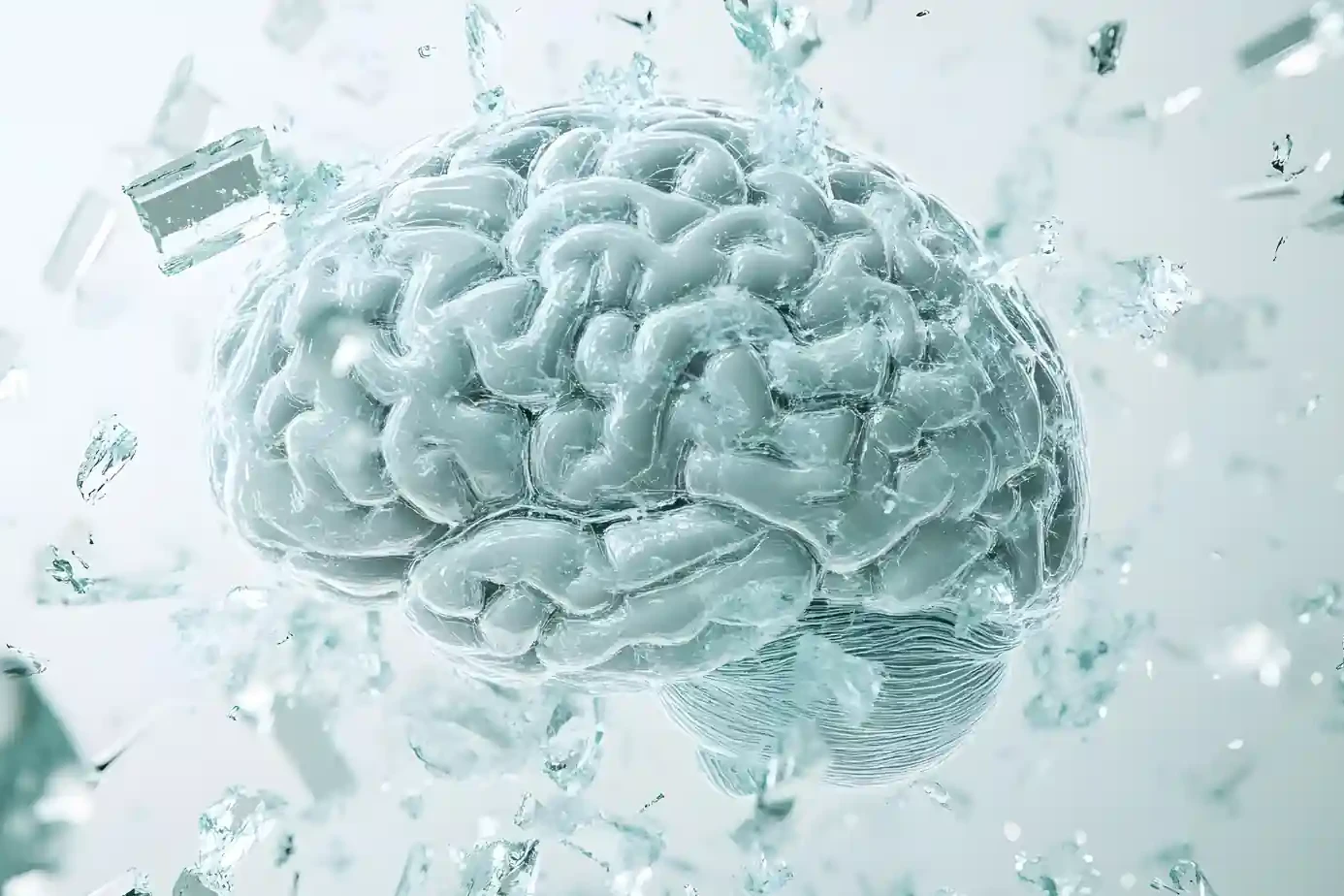As a neurologist, I’ve stood alongside countless individuals and their families confronting the uncertainty of brain aneurysms, and I understand how overwhelming it can feel.
Many of you worry—what is this condition? Is it dangerous? How will treatment unfold, and can life truly return to normal afterward?
In this blog, we will explore brain aneurysms in clear, understandable terms, giving you answers you need without the medical jargon.
We’ll walk through 24 of the most common (and important) questions I get asked about brain aneurysms, explained in a way that’s clear, compassionate, and medically accurate.
Table of Contents
Toggle1. What Exactly is a Brain Aneurysm?
A brain aneurysm is a weak spot in a blood vessel wall that balloons outward, like a tiny balloon or berry. If it stays small, it may never cause trouble.
But if it grows or pops, blood can leak into the surrounding brain tissue, causing a subarachnoid hemorrhage or hemorrhagic stroke, which is a serious medical emergency.
Most aneurysms remain silent, discovered accidentally during imaging for another problem.
There are two main types:
- Saccular (berry) aneurysm: balloon-shaped and most common.
- Fusiform aneurysm: longer, tube-shaped swelling of the vessel.
Brain aneurysms vary in size, tiny ones under 3 mm may never cause harm, while large or fast-growing brain aneurysms become riskier over time. They’re caused by factors like high blood pressure, smoking, genetic influences, or injury to the vessel wall.
2. Does Every Brain Aneurysm Require Treatment?
Not at all; many brain aneurysms don’t need immediate action.
Doctors consider factors such as aneurysm size, shape, location, and your overall health profile.
A small, smooth aneurysm in a low-risk area might be watched with periodic imaging every six months to a year.
If the aneurysm is small and stable, treatment may add risk without significant benefit. That’s why observation is sometimes the safest path.
But if the aneurysm is large, growing over time, has a wide neck, or is situated in a dangerous area, we may require immediate treatment to prevent rupture.
Your age, medical history, and personal preference play into the decision, especially since invasive procedures carry their own risks.
This is why individualized assessment is critical. No two aneurysms are the same.
3. What Symptoms Should I Watch Out For?
Unruptured brain aneurysms may give no signal at all, remaining silent for years.
But if they press on nerves or brain tissue, you might experience headaches behind the eye, changes in vision (like double vision), numbness in the face, or trouble speaking. These signals should never be ignored.
When an aneurysm bursts, the classic sign is a sudden, explosive headache, described by many as “the worst headache of my life.” It’s often accompanied by nausea, vomiting, neck stiffness, light sensitivity, confusion, or even a brief loss of consciousness.If these symptoms strike, it’s critical to call emergency services immediately—every second counts.
Common symptoms include:
- Persistent headache
- Blurred or double vision
- Pain above or behind the eyes
- A droopy eyelid
- Difficulty concentrating
A ruptured aneurysm, on the other hand, causes:
- A sudden, thunderclap headache
- Nausea and vomiting
- Loss of consciousness
- Neck stiffness
- Seizures
- Light sensitivity
Even if an aneurysm hasn’t burst, sudden-onset symptoms affecting eyes, face, or speech are red flags that merit prompt medical attention.
Early detection and quick response can make a life-saving difference.
If you or someone you know experiences these, don’t wait. It’s a medical emergency. Call for help immediately.
4. Is a Ruptured Aneurysm Always Life-Threatening?
Yes.
A ruptured aneurysm causes subarachnoid hemorrhage, bleeding into the space between the brain and its protective covering.
The sudden pressure and irritation can lead to brain damage, stroke-like symptoms, and elevated risk of death. Mortality rates reach up to 50%, especially if medical care is delayed.
But outcomes vary depending on how quickly we intervene, the patient’s age, overall health, and bleeding severity.
Some people recover with few long-term effects, while others may experience lasting physical, cognitive, or emotional challenges.
Even after surviving the initial rupture, complications like swelling, vasospasm (narrowing of other blood vessels), hydrocephalus (fluid buildup), or re-bleeding can arise. These must be monitored and addressed quickly in the ICU.
Recovery often includes rehabilitation: physical therapy for balance and strength, occupational therapy for daily tasks, and speech therapy if there were language issues.
Though serious, many patients go on to rebuild lives that are full and meaningful with appropriate care and support.
5. How Are Brain Aneurysms Treated?
There are two main treatment paths: endovascular coiling and microsurgical clipping, each with its own advantages and limitations.
Endovascular Coiling:
A catheter is inserted (usually through the groin) and guided into the brain’s blood vessels to reach the aneurysm.
Tiny platinum coils are packed inside, which blocks blood flow into the aneurysm and eventual clot formation, sealing it off.
This minimally invasive approach avoids opening the skull, generally resulting in shorter hospital stays and faster recovery.
Not suitable for all aneurysm shapes—especially those with a wide neck that risks coil migration.
Microsurgical Clipping:
A neurosurgeon removes a small portion of the skull to access the aneurysm and applies a custom-made clip across its base, preventing blood from entering.
This direct sealing is very effective, especially for wide-necked brain aneurysms or those not easily accessed via vessels.
Requires open surgery and longer recovery but offers long-term stability with a very low recurrence risk.
Involves a larger incision and demands significant surgical experience.
Your physician team weighs factors like aneurysm anatomy, patient age, health status, and personal preference to choose between these methods.
6. How Do You Decide Between Coiling and Clipping?
It’s not a solo decision. At our center, we use a multidisciplinary approach.
Choosing between coiling and clipping depends on individual aneurysm characteristics and patient factors:
Size and Shape:
Small, narrow-necked aneurysms are well-suited to coiling.
Large or wide-necked aneurysms might fare better with clipping.
Location:
Brain aneurysms in hard-to-reach places may be safer for coiling.
Superficial aneurysms may be clipped more easily.
Patient Health and Age:
Coiling is less taxing physically, better for older adults or those with other health issues.
Clipping may be preferred for younger, healthier patients seeking long-term durability.
Risk Tolerance and Preferences:
You might opt for the less-invasive route even if follow-up imaging will be needed.
Others might choose clipping for a one-time solution.
We review:
- MRI/MRA, CTA, and digital angiography
- Age and comorbidities
- Aneurysm location and anatomy
The goal is simple: choose the method with the lowest risk and highest chance of success.
7. Can You Tell Me in Simple Words? What Is Coiling Like?
Sure.
Picture this:
- You lie under anesthesia in a special room.
- A small tube enters through an artery in your thigh or wrist. This tube is guided up to your brain while medical imaging shows every twist and turn.
- Once at the aneurysm, soft platinum coils are gently packed inside, filling the space so blood no longer enters.
- Over time, these coils help your body form a clot inside the aneurysm, sealing it away from circulation and preventing future rupture.
Coiling typically takes 1–3 hours and most people leave the hospital within a few days, feeling surprisingly good. Because it’s minimally invasive, there’s no need to open your skull, and you usually recover faster than with open surgery.
The procedure is very technical, but from your point of view, it’s gentle: a small incision paired with expert precision.
You’ll be asleep the whole time. And there’s no visible scar.
8. How Long Will I Stay in the Hospital?
- Unruptured aneurysm (coiling): Usually 2–3 days
- Ruptured aneurysm: May require ICU and 2–4 weeks of observation, depending on complications
9. Do My Family Members Need to Be Checked Too?
In most cases, no but there are exceptions.
- A family history of brain aneurysms, particularly among first-degree relatives, raises the likelihood of genetic factors at play.
- Having multiple aneurysms yourself also increases concern.
If one of those situations applies to you, we often recommend that close family members, like siblings or children, undergo a simple screening MRI or CT angiogram.
This may reveal unnoticed brain aneurysms early, allowing monitoring or treatment before any risk of rupture.
Screening is a personal choice influenced by medical advice.
10. Could I Have Known About the Aneurysm Before It Ruptured?
Sometimes, yes but often, unfortunately, no.
Unruptured aneurysms may cause mild and intermittent symptoms long before becoming serious. For example, a slight headache, visual changes, or facial sensitivity could be clues.
Unfortunately, most are silent, growing slowly without causing any disturbances. Many are found by accident during imaging for other issues, like migraines, stroke evaluation, or head injury.
That’s why early screening is wise if you:
- Have a family history
- Have hypertension, kidney disease, or connective tissue disorders
- Are a smoker
11. Can a Treated Aneurysm Come Back?
Yes, it’s rare but possible.
After coiling, there’s a chance the aneurysm may reopen over time, due to coil compaction or incomplete clotting. That’s why follow-up imaging is essential.
Studies show recurrence rates of 5–15%, depending on factors like aneurysm size, shape, and complexity.
Clipping, on the other hand, leaves a very low recurrence rate, often under 2%. That’s part of why, for certain brain aneurysms, clipping is the preferred route.
Regardless of treatment type, long-term follow-up, initial scans at 6–12 months, then yearly or every few years is recommended.
If we detect changes, retreatment might involve additional coiling, a stent placement, or rarely, re-clipping.
12. Can I Have an MRI After Coiling?
Yes, absolutely.
The platinum coils used are non-ferromagnetic and fully MRI-safe.
Always alert the MRI team that you’ve had aneurysm treatment, so they can adjust settings if needed, but no major precautions are required.
You’ll be able to undergo standard MR, MR angiogram, and even functional MRI (fMRI) depending on your neurologist’s recommendation.
13. When Can I Start Moving Again?
Within days after coiling, light movement like walking around your room or corridor is encouraged to boost circulation and prevent clots.
- If you undergo clipping, you might spend 1–2 days resting more before gently moving, physical and occupational therapists likely step in during your hospital stay.
- Heavy lifting, intense workouts, or strenuous activity is typically limited for 4–8 weeks post-treatment, depending on your surgeon’s advice.
- Simple chores (slow walking, light housework) are usually okay once your appetite returns.
- Driving is often restricted for 1–2 weeks after coiling and longer after clipping or rupture; check with your doctor before hitting the road.
14. Can I Go Back to Work?

Yes, and many do — fully.
If your job is desk-based, expect to return in 2–4 weeks.
Physically demanding work may require more recovery time.
15. Can Children Get Brain Aneurysms?
Though rare in children, brain aneurysms can and do occur.
When they appear in kids, they’re often linked to genetic or structural conditions, such as polycystic kidney disease or connective tissue disorders.
In children, brain aneurysms are often larger or more complex, and require specialized care from pediatric neurosurgeons.
Despite their seriousness, kids often recover faster than adults, thanks to higher plasticity and resilience.
Treatment plans follow the same paths (coiling or clipping) but special considerations are made for growth and long-term development.
If there’s a family history or a known genetic disorder, pediatric screening may be offered.
16. How Long Has My Aneurysm Been There?
There’s no precise answer.
Some aneurysms form slowly over years, others grow rapidly.
In some people, they never rupture. In others, rupture may be the first sign.
17. How Long Does the Coiling Procedure Take?
On average: 1.5 to 3 hours.
It depends on the size, complexity, and how easily the catheter can reach the aneurysm.
18. Will I Need Seizure Medications?

Only if:
- You’ve had a seizure
- There’s a risk of brain irritation post-treatment
In most cases, no anticonvulsants are needed long-term.
19. Will I Stay in the ICU?
Yes — especially after ruptured aneurysm treatment.
We monitor for:
- Vasospasm (narrowing of vessels)
- Rebleeding
- Swelling or hydrocephalus
20. Can I Travel by Air?
Yes, but wait until your neurologist says it’s safe.
Generally, waiting 2–4 weeks after coiling or clipping ensures your blood pressure and skull have healed properly.
After a rupture, your physician may suggest a longer delay depending on complications like hydrocephalus or vasospasm.
Cabin pressure during flight is well-tolerated once the aneurysm is secured—you won’t re-rupture mid-flight.
Still, it’s wise to carry a letter from your neurologist detailing your condition and treatment, in case medical questions arise.
Stay hydrated, walk often (on long flights), and avoid heavy lifting during your journey.
21. Will the Coils Set Off Airport Scanners?
Nope.
Platinum coils aren’t magnetic and don’t trigger metal detectors.
Though visible on MRI and CT scans, they go unnoticed by walk-through scanners at airports.
Even if you’re pulled aside, explaining “aneurysm coils” is usually enough to clarify things.
Some patients carry a medical ID card or implant card for added reassurance.
22. Do I Need Regular Follow-Ups?
Yes. Follow-up imaging at 6 months, 1 year, and 2 years is standard — especially after coiling.
This helps us check if the aneurysm is stable and sealed.
23. How Can I Ensure a Smooth Recovery?
- Take your medications religiously
- Eat well, hydrate, and rest
- Avoid smoking or alcohol
- Follow up with your neurologist
- And be patient — healing takes time
24. Is There Anything I Can Do to Prevent Brain Aneurysms?
You can reduce your risk by:
- Controlling blood pressure
- Quitting smoking
- Managing stress
- Eating a healthy diet
- Getting routine checkups if you have a family history
Final Thoughts from Dr. Chandril Chugh
Brain aneurysms may feel frightening, but knowledge brings confidence. With swift diagnosis, tailored treatment, and ongoing care, many patients go on to lead full, rewarding lives.
But with the right awareness, timely diagnosis, and expert treatment, they’re manageable.
Thousands of people go on to live full, healthy lives after aneurysm treatment — and you can too.
If you’re worried, don’t Google and guess. Talk to a neurologist.Book an appointment—I’m here to listen, clarify, and guide you toward clarity and health.
Need More Help?
Visit drchandrilchugh.com for expert guidance, appointment bookings, and more information on neurological health.
About The Author

This article is medically reviewed by Dr. Chandril Chugh, Board-Certified Neurologist, providing expert insights and reliable health information.
Dr. Chandril Chugh is a U.S.-trained neurologist with over a decade of experience. Known for his compassionate care, he specializes in treating neurological conditions such as migraines, epilepsy, and Parkinson’s disease. Dr. Chugh is highly regarded for his patient-centered approach and dedication to providing personalized care.
→ Book a consultation to discover which remedies suit your needs best.




